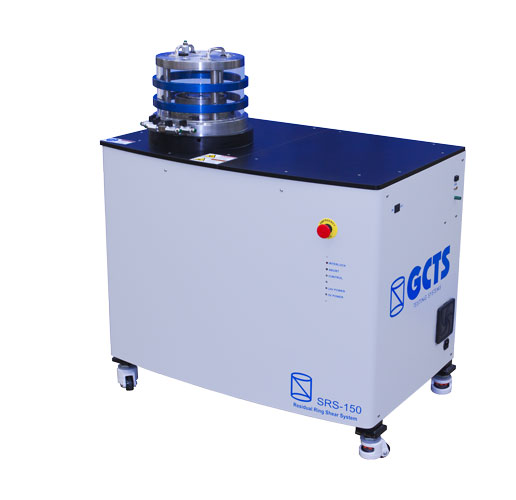Other Shear Tests:
Other Relevant Sites:
Ring Shear Test
Overview
The Ring Shear Test is used to determine the residual shear strength of a soil, which is the shear strength of a soil after failure has occurred. This is done by taking a presheared, hollow, cylindrical specimen and twisting it along a failure plane while measuring the shear force and rotation of the specimen. This is an important test for determining the shear strength of soil with a preexisting shear surface, which is the case after a landslide or on a fault line.
How is a Ring Shear Test Performed?
The hollow specimen is placed inside a ring shear apparatus with a porous stone on top and below the specimen. The apparatus is filled with water, and an axial stress is slowly applied to the top of the specimen. The stress is increased slowly and incrementally, allowing the specimen to consolidate. Once the specimen has completely consolidated, the axial stress is reduced to the level that will be used for testing. The specimen is then pre—sheared by rotating the bottom of the ring shear apparatus (therefore rotating only the bottom of the specimen) slowly and constantly, at generally less than 18 mm/min., until the device has made one complete revolution.
The base is again rotated slowly and constantly, now at approximately 0.2 mm/min., until the measured shear stress is constant at a constant rate of rotation. This is the state of stress where the residual strength can be determined.
After the residual strength state has been determined, the axial stress on the specimen is increased. The specimen has already been sheared, so preshearing does not need to be performed again. As described immediately above, the base of the ring shear device is rotated at a very slow, constant rate until the measured shear stress is constant. The residual strength at this axial stress can be determined. This procedure is performed with multiple axial stresses, with the lowest axial stress being tested first and increasing axial stresses being applied to subsequent tests.
What Does a Ring Shear Test Specimen Look Like?
A typical specimen is a hollow cylinder with an inside diameter of at least 50 mm (2 in.) and must be at least 60% of the outside diameter. Before consolidation, the specimen must have a height of at least 5 mm (0.2 in.). The maximum particle size within the specimen must not be greater than 10% of the initial height. The specimen can either be an undisturbed specimen that is prepared to the specifications above or can be a reconstituted specimen of the soil that will be tested. For the ring shear test, the same test specimen can be used for all axial stresses that are tested.
How are Soil Characteristics Determined?
After performing the test, the shear and normal stresses can be calculated for each axial load tested. For each normal stress, a graph should be created showing the shear stress versus the shear displacement. The residual shear strength is equal to the constant minimum shear stress value for each axial stress. Next, a graph can be created of the axial stress versus the shear stress where each shear strength is plotted with its corresponding axial stress. This creates the shear stress envelope, which shows the values of residual shear strength for the specimen as a function of the axial stress.
Keywords: Ring Shear — Ring Shear Test — Ring Shear Tester — Ring Shear Test Machine — Ring Shear Testing System — Ring Shear Testing Apparatus — Ring Shear Testing Equipment — Consolidate — Residual Shear Strength — Mohr-Coulomb Strength Envelope — Shear Strength
© 2016 Geotechnical Consulting and Testing Systems, LLC. All Rights Reserved.

